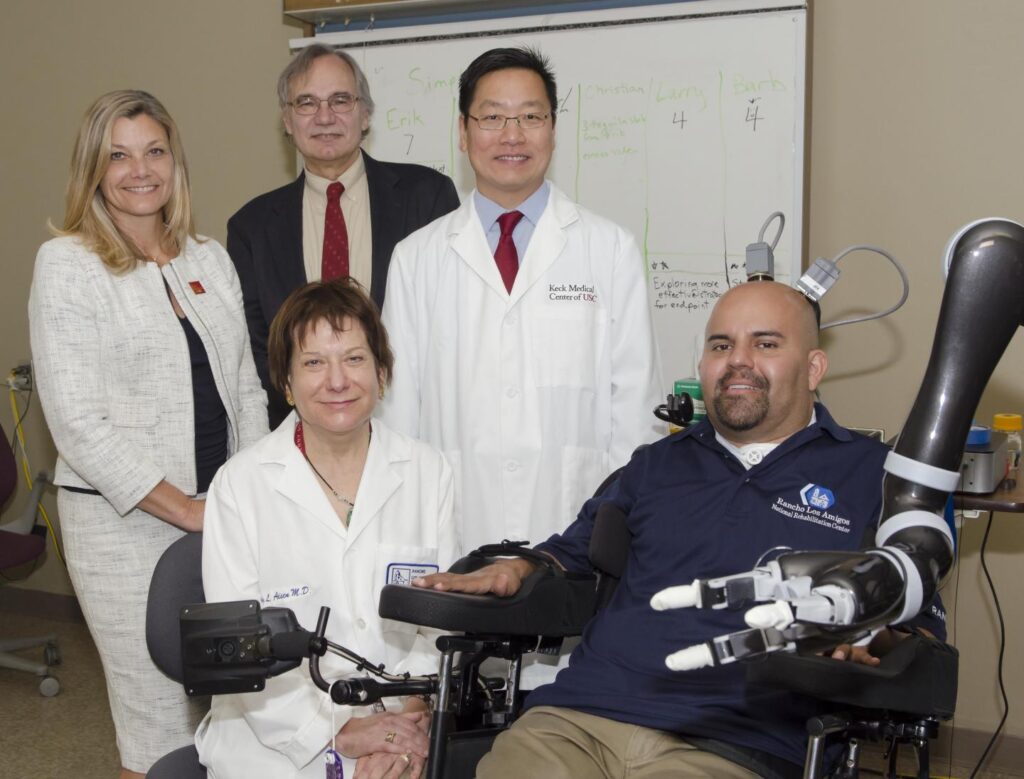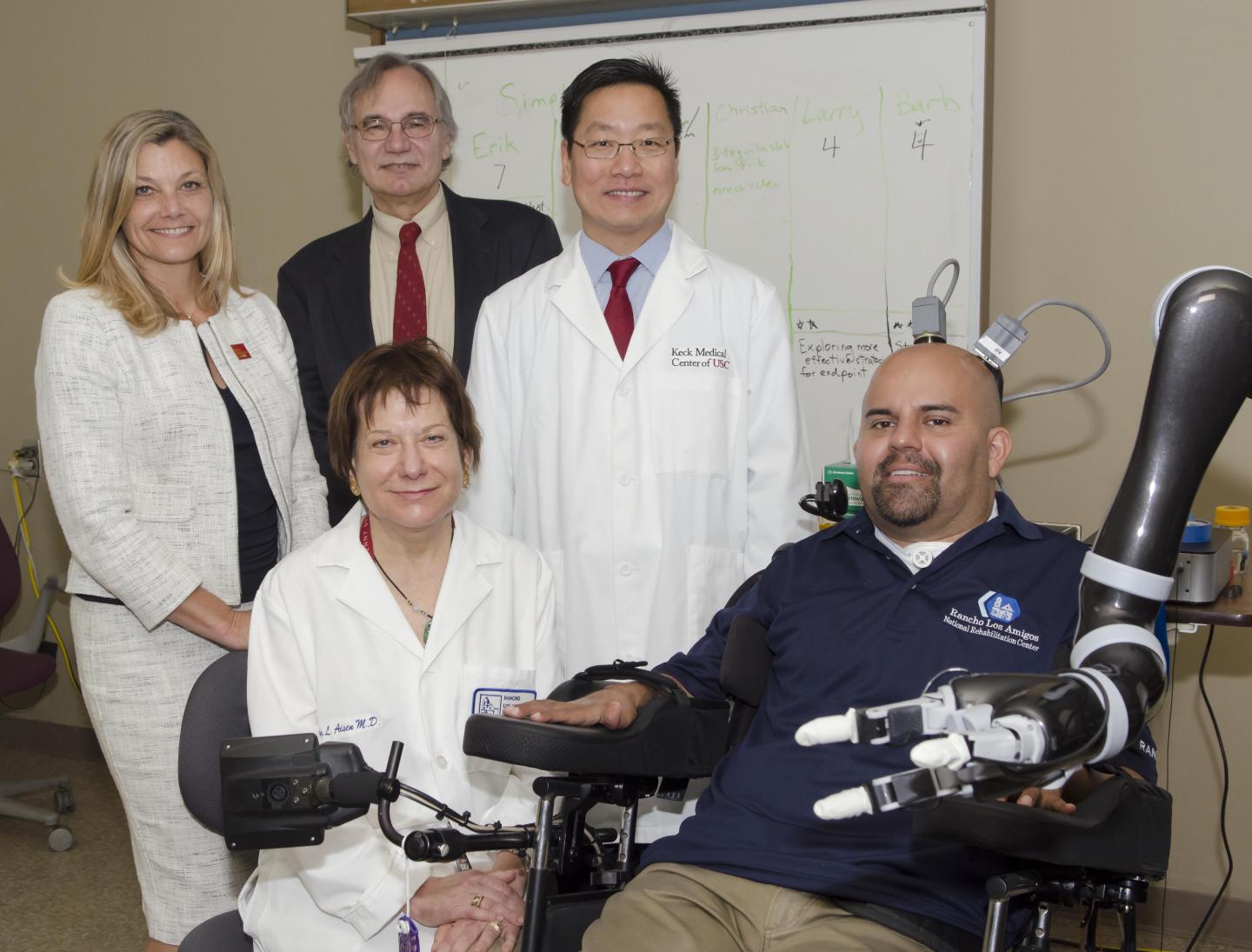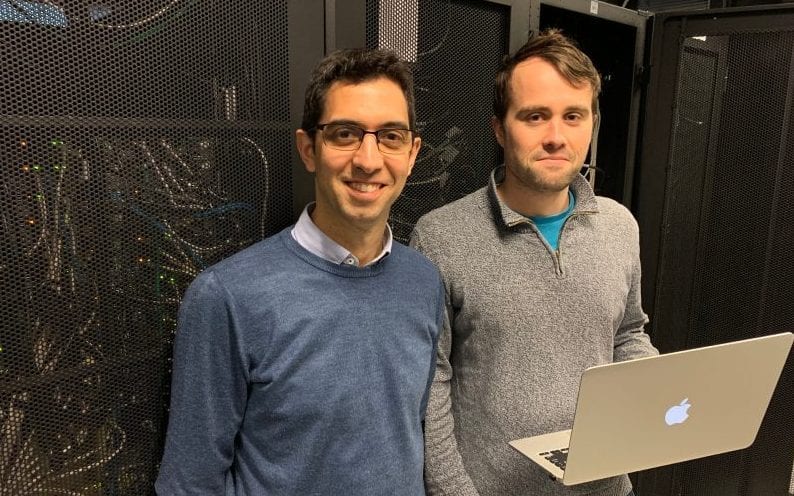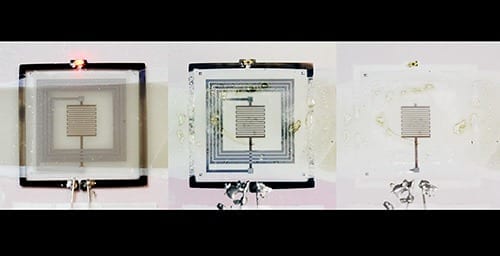
CREDIT: Lance Hayashida, Caltech
The next generation of neuroprosthetics: More natural, effortless, intuitive movement achieved
Paralyzed from the neck down after suffering a gunshot wound when he was 21, Erik G. Sorto now can move a robotic arm just by thinking about it and using his imagination.
Through a clinical collaboration between Caltech, Keck Medicine of USC and Rancho Los Amigos National Rehabilitation Center, the now 34-year-old Sorto is the first person in the world to have a neural prosthetic device implanted in a region of the brain where intentions are made, giving him the ability to perform a fluid hand-shaking gesture, drink a beverage, and even play “rock, paper, scissors,” using a robotic arm.
Neural prosthetic devices implanted in the brain’s movement center, the motor cortex, can allow patients with paralysis to control the movement of a robotic limb. However, current neuroprosthetics produce motion that is delayed and jerky–not the smooth and seemingly automatic gestures associated with natural movement. Now, by implanting neuroprosthetics in a part of the brain that controls not the movement directly but rather our intent to move, Caltech researchers have developed a way to produce more natural and fluid motions.
Designed to test the safety and effectiveness of this new approach, the clinical trial was led by principal investigator Richard Andersen, the James G. Boswell Professor of Neuroscience at Caltech, neurosurgeon Charles Y. Liu, professor of neurological surgery, neurology, and biomedical engineering at USC, and neurologist Mindy Aisen, chief medical officer at Rancho Los Amigos.
Andersen and his colleagues wanted to improve the versatility of movement that a neuroprosthetic can offer to patients by recording signals from a different brain region other than the motor cortex, i.e., the posterior parietal cortex (PPC), a high-level cognitive area. In earlier animal studies, the Andersen lab found that it is here, in the PPC, that the initial intent to make a movement is formed. These intentions are then transmitted to the motor cortex, through the spinal cord, and on to the arms and legs where the movement is executed.
“The PPC is earlier in the pathway, so signals there are more related to movement planning–what you actually intend to do–rather than the details of the movement execution,” Andersen says. “When you move your arm, you really don’t think about which muscles to activate and the details of the movement–such as lift the arm, extend the arm, grasp the cup, close the hand around the cup, and so on. Instead, you think about the goal of the movement, for example, ‘I want to pick up that cup of water.’ So in this trial, we were successfully able to decode these actual intents, by asking the subject to simply imagine the movement as a whole, rather than breaking it down into a myriad of components. We expected that the signals from the PPC would be easier for patients to use, ultimately making the movement process more fluid.”
The device was surgically implanted in Sorto’s brain at Keck Hospital of USC in April 2013, and he since has been training with Caltech researchers and staff at Rancho Los Amigos to control a computer cursor and a robotic arm with his mind. The researchers saw just what they were hoping for: intuitive movement of the robotic arm.
Sorto, a single father of two who has been paralyzed for over 10 years, was thrilled with the quick results: “I was surprised at how easy it was [to control the robotic arm],” he says. “I remember just having this out-of-body experience, and I wanted to just run around and high-five everybody.”
Read more: Clinical trial shows intuitive control of robotic arm using thought
The Latest on: Neuroprosthetics
[google_news title=”” keyword=”Neuroprosthetics” num_posts=”10″ blurb_length=”0″ show_thumb=”left”]
via Google News
The Latest on: Neuroprosthetics
- Samuel L. Jackson To Lead Alongside ‘Crazy Rich Asians’ Star Henry Golding in ‘Head Games’on May 8, 2024 at 8:06 am
Samuel L. Jackson will star alongside Crazy Rich Asians star Henry Golding in Head Games, a new psychological sci-fi thriller. Deadline reports that Anthony Mandler, best known for music videos, will ...
- Snake Eyes Star Joins Samuel L. Jackson in Upcoming Sci-Fi Thrilleron May 7, 2024 at 3:41 pm
Movie legend Samuel L. Jackson and Snake Eyes star Henry Golding are joining forces for the upcoming sci-fi thriller Head Games. The film will showcase Jackson as a tech tycoon and Golding as a ...
- Nano-Scale Vision Implant Promises New Hope for Blindnesson May 7, 2024 at 10:37 am
Summary: Researchers developed a novel vision implant, featuring electrodes as small as a single neuron. This advanced technology, designed to interface directly with the visual cortex, could ...
- Samuel L Jackson lines up next lead movie roleon May 7, 2024 at 3:00 am
Samuel L Jackson has lined up his next lead movie role, joining the cast for Head Games with Henry Golding. As per Deadline, the pair will star in the sci-fi thriller, which follows a corporate spy ...
- Samuel L. Jackson, Henry Golding to Star in Sci-Fi Psychological Thriller ‘Head Games’on May 6, 2024 at 6:07 pm
Anthony Mandler will direct the tech-focused corporate spy thriller, which Jeffrey Greenstein's new company A Higher Standard will pitch to buyers in Cannes.
- Samuel L. Jackson, Henry Golding to Lead Psychological Thriller ‘Head Games,' Launching in Cannes With Higher Standard, CAA, Rangeon May 6, 2024 at 9:00 am
Samuel L. Jackson and Henry Golding are set to lead the cast of psychological sci-fi thriller “Head Games,” to be directed by Anthony Mandler (“Surrounded,” “Monster”) from a script by Colin Liddle ...
- Neuroprosthetics Market To Hit USD 30.26 Billion By 2031, Says SNS Insideron April 17, 2024 at 8:46 pm
The neuroprosthetics market is revolutionizing healthcare by offering life-altering solutions for individuals with neurological disorders, nerve injuries, and sensory impairments. These devices ...
- Neuroprosthetics Market to Hit USD 30.26 billion by 2031, says SNS Insideron April 16, 2024 at 5:01 pm
According to SNS Insider, the Neuroprosthetics Market was valued at USD 11.71 Billion in 2023 and is projected to reach USD 30.26 Billion by 2031. The neuroprosthetics market is revolutionizing ...
- Boosting the brain's control of prosthetic devices by tapping the cerebellumon April 14, 2024 at 5:00 pm
Neuroprosthetics, a technology that allows the brain to control external devices such as robotic limbs, is beginning to emerge as a viable option for patients disabled by amputation or ...
- Adding A Gentle Touch To Prosthetic Limbs With Somatosensory Stimulationon June 30, 2021 at 4:29 am
Neuroprosthetics such as those being prototyped by Nathan Copeland are cybernetic neural implants which seek to restore functionality that was lost due to disease or an accident. Combining ...
via Bing News











